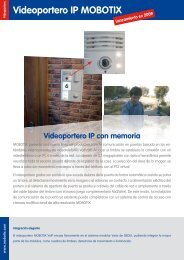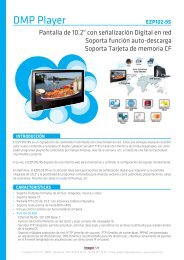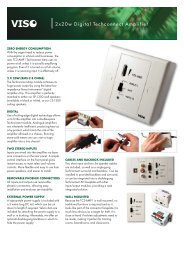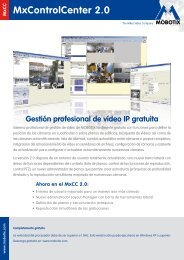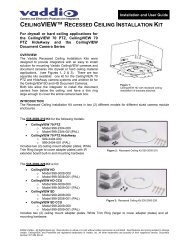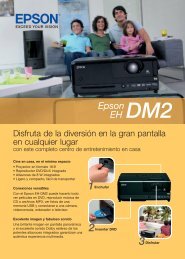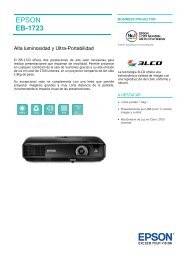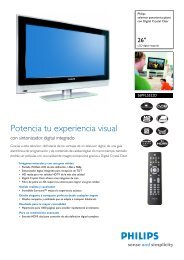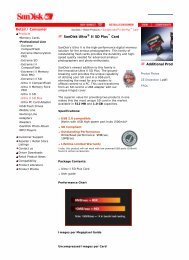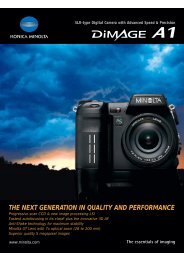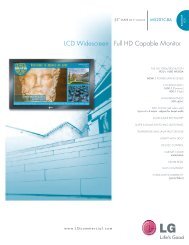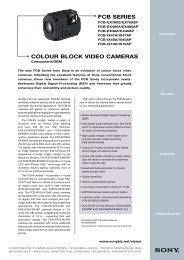Roku Object Reference - imaginArt
Roku Object Reference - imaginArt
Roku Object Reference - imaginArt
You also want an ePaper? Increase the reach of your titles
YUMPU automatically turns print PDFs into web optimized ePapers that Google loves.
Introduction<br />
<strong>Roku</strong> <strong>Object</strong>s (RO) are the standardized way <strong>Roku</strong> software exposes functionality for our products’ public<br />
SDKs. In other words, to publish a new API, <strong>Roku</strong> will create a new <strong>Roku</strong> <strong>Object</strong>. The first product to<br />
use this method is the BrightSign.<br />
<strong>Roku</strong> <strong>Object</strong>s have these key objectives:<br />
• To be largely language independent.<br />
• To be robust to software upgrades. A RO interface, once established, never changes its methods<br />
or its binary linkage.<br />
• To be compatible with compiled or interpreted languages. ROs are completely discoverable and<br />
callable at run time or compile time.<br />
• To support multiple abstract interfaces. This allows objects to be used in powerful ways as we’ll<br />
see below.<br />
As well as the core <strong>Roku</strong> <strong>Object</strong> architecture, this reference also defines event architecture and the required<br />
interfaces to participate in this scheme. The event scheme is a fundamental piece of any multi-threaded<br />
application. Its standardization is the first part in a sequence of RO based standards <strong>Roku</strong> will adopt across<br />
our products, to maximize compatibility of third party plug-ins.<br />
This document describes the <strong>Roku</strong> <strong>Object</strong> architecture as two main sections:<br />
• how to use them (as a script writer)<br />
• the initial objects defined for BrightSign<br />
<strong>Roku</strong> <strong>Object</strong> Interfaces and Methods<br />
Every <strong>Roku</strong> <strong>Object</strong> consists of one or more “Interfaces”. An RO Interface consists of one or more<br />
Methods. For example, the roVideoPlayer has two interfaces: ifMediaTransport and ifSetMessagePort.<br />
The Interface ifSetMessagePort has one Member: SetPort.<br />
For example:<br />
p = Create<strong>Object</strong>("roMessagePort")<br />
video= Create<strong>Object</strong>("roVideoPlayer")<br />
gpio = Create<strong>Object</strong>("roGpioControlPort")<br />
gpio.SetPort(p)<br />
video.SetPort(p)<br />
This syntax makes use of a short cut provided by the language: The interface name is optional, unless it is<br />
needed to resolve name conflicts.<br />
For example:<br />
gpio.SetPort(p)<br />
is the same as:<br />
gpio.ifSetMessagePort.SetPort(p)<br />
Note that the abstract Interface ifSetMessagePort is exposed and implemented by both the<br />
roGpioControlPort and the roVideoPlayer objects. Once the method SetPort is called, these objects will<br />
send their events to the supplied message port. This is discussed more in the Event section below.<br />
Once an interface is defined and published, it is never changed. For example, imagine if <strong>Roku</strong> decided in a<br />
future release that the ifSetMessagePort really needed another method, say “ClearMessagePort”. Instead of<br />
changing the ifSetMessagePort interface, we would create a new interface ifSetMessagePort2. This<br />
4



